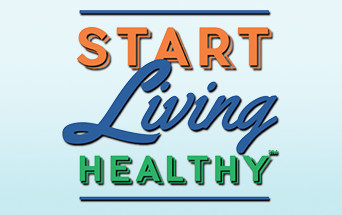Breast & Cervical Cancer Control Program (BCCCP)
- What is Breast and Cervical Cancer?
- Breast and Cervical Cancer Control Program Highlights
- Risk Factors for Breast and Cervical Cancer
- Program Eligibility
- BCCCP Providers
- Breast and Cervical Cancer Resource Library
- Contact Us
What is Breast and Cervical Cancer?
Breast cancer is a malignant tumor that starts from cells of the breast. A malignant tumor is a group of cancer cells that may grow into (invade) surrounding tissues or spread (metastasize) to distant areas of the body. The disease occurs almost entirely in women, but men can get it, too.
What is cervical cancer? The cervix is the lower part of the uterus (womb). It is sometimes called the uterine cervix. The body of the uterus (the upper part) is where a baby grows. The cervix connects the body of the uterus to the vagina (birth canal). The part of the cervix closest to the body of the uterus is called the endocervix. The part next to the vagina is the exocervix (or ectocervix). The 2 main types of cells covering the cervix are squamous cells (on the exocervix) and glandular cells (on the endocervix). The place where these 2 cell types meet is called the transformation zone. Most cervical cancers start in the transformation zone
Breast and Cervical Cancer Control Program Highlights
About the Program: The Hawaii Breast and Cervical Cancer Control Program was established in 1993 through a Cooperative Agreement with the Centers for Disease Control and Prevention (CDC) to provide breast and cervical cancer screening services under the National Breast and Cervical Cancer Early Detection Program (NBCCEDP). Excluding skin cancer, breast cancer is the most common cancer among American women and is second only to lung cancer as a cause of cancer related death. Many of these deaths, which will occur disproportionately among women of racial and ethnic minority and low-income groups, could be avoided by making cancer screening services available to all women at risk.
National Breast and Cervical Cancer Education Program
The mission of the BCCCP is to provide:
- Breast and cervical cancer screening services to medically under-served women
- Appropriate referrals, and when necessary, appropriate diagnostic follow-up, case management and assurances for medical treatment
- Public information and education programs to increase the use of breast and cervical screening service
- Education to health professionals to improve the breast and cervical screening process
- Mechanisms to monitor the quality of the breast and cervical screening process
- Linkages with key partnerships
Accomplishments: Since 1997, more than 7,600 women have been screened, with the number continuing to grow each year. Through this effort, 136 cases of invasive cervical cancers and 117 pre-cancerous cervical lesions have been detected. The program’s support has been instrumental in helping community providers build the capacity and infrastructure needed to reach women most at risk and raise community awareness around early detection.
To reach underserved women, the BCCCP supports an array of strategies, including program management, screening and diagnostic services, data management, quality assurance and quality improvement, evaluation, partnerships, professional development, and recruitment. Providers in the program work collaboratively to provide breast and cervical cancer screening, diagnostic evaluation, and treatment referrals (where appropriate). The program’s continued success depends in large part on the complementary efforts of a variety of state and community partners.
Risk Factors for Breast and Cervical Cancer
A risk factor is anything that affects your chance of getting a disease, such as cancer. Different cancers have different risk factors. For example, exposing skin to strong sunlight is a risk factor for skin cancer. Smoking is a risk factor for cancers of the lung, mouth, larynx (voice box), bladder, kidney, and several other organs. Risk factors don’t tell us everything. Having a risk factor, or even several, does not mean that you will get the disease
What are the risk factors for breast cancer?
Most women who have one or more breast cancer risk factors never develop the disease, while many women with breast cancer have no apparent risk factors (other than being a woman and growing older). Even when a woman with risk factors develops breast cancer, it is hard to know just how much these factors may have contributed to her cancer. There are different kinds of risk factors. Some factors, like a person’s age or race, can’t be changed. Others are linked to cancer-causing factors in the environment. Still others are related personal behaviors, such as smoking, drinking, and diet. Some factors influence risk more than others, and your risk for breast cancer can change over time, due to factors such as aging or lifestyle.
Breast cancer risk factors include:
- Gender
- Aging
- Genetic risk factors
- Family history/personal history of breast cancer
- Dense breast tissue
What are the risk factors for cervical cancer?
Several risk factors increase your chance of developing cervical cancer. Women without any of these risk factors rarely develop cervical cancer. Although these risk factors increase the odds of developing cervical cancer, many women with these risks do not develop this disease. When a woman develops cervical cancer or pre-cancerous changes, it may not be possible to say with certainty that a particular risk factor was the cause. In thinking about risk factors, it helps to focus on those you can change or avoid (like smoking or human papilloma virus infection), rather than those you cannot (such as your age and family history). However, it is still important to know about risk factors that cannot be changed, because it’s even more important for women who have these factors to get regular Pap tests to detect cervical cancer early.
Cervical cancer risk factors include:
- HPV
- Smoking
- Immunosuppression
- Chlamydia infection
- Diet
- Oral contraceptives (birth control pills)
- Family history of cervical cancer
Program Eligibility
Eligibility Requirements:
- Woman age 40 to 64
- Income at or below 250% of the federal poverty level
- Uninsured or under-insured
To verify eligibility, please call one of the BCCCP healthcare providers.
BCCCP Providers
The Breast and Cervical Cancer Control Program partners with 12 community clinics, hospitals and health care organizations across the state to offer free breast and cervical cancer screenings to eligible women, with a special focus on reaching Native Hawaiian and Filipino women.
Oahu
- Kalihi-Palama Health Center
915 N. King Street
Honolulu, HI 96817
(808) 848-1438 - Kalihi-Palama Health Center (Downtown)
89 S. King Street
Honolulu, HI 96813
(808) 792-5576 - Kokua Kalihi Valley
2239 N. School Street
Honolulu, HI 96819
(808) 848-0976 - The Queen’s Medical Center – Women’s Health Center (Lobby)
1301 Punchbowl Street
Honolulu, HI 96813
(808) 691-7726 - The Queen’s Medical Center – Molokai Women’s Health Clinic
280 Home Olu Place
Kaunakakai, HI 96748
(808) 553-3145 - Waimanalo Health Center
41-1347 Kalanianaole Hwy
Waimanalo, HI 96795
(808) 259-7948 - Waianae Coast Comprehensive Health Center
86-260 Farrington Hwy
Waianae, HI 96792
(808) 697-3594 - Waipahu Family Health Center
94-428 Mokuola Street Suite 108B
Waipahu, HI 96797
(808) 697-3882
Big Island
- Keaau Family Health Center
16-192 Pili Mua Street
Keaau, HI 96749
(808) 930-0400 - Pahoa Family Health Center
15-2866 Pahoa Village Road
Pahoa, HI 96778
(808) 965-9711 - Hamakua Health Center
45-549 Plumeria Street
Honokaa, HI 96727
(808) 775-7206
Kauai
- Ho‘ola Lahui Hawaii – Various Locations
(808) 245-7767
Breast and Cervical Cancer Resource Library
Breast Cancer Screening
American Cancer Society Guidelines for Early Detection of Breast Cancer
Breast Cancer Screening Information
U.S. Preventive Services Task Force: Screening for Breast Cancer
National Cancer Institute Statement on Mammography Screening, February 21, 2002
Cervical Cancer Screening
Cervical Cancer Screening
Cervical Cancer Screening Guidelines
Asian Language Cancer Information
The Asian Pacific Islander Cancer Education Materials Tool (APICEM) These resources are available to help Asians and Pacific Islanders with limited English-speaking abilities gain access to information on how to reduce their risks of preventable malignancies, including cancers of the breast.
Contact Us
For more information about the Hawaii Breast and Cervical Cancer Control Program, please contact us using the information below:
Breast and Cervical Cancer Control Program (BCCCP)
601 Kamokila Boulevard, #344
Kapolei, Hawaii 96707
(808) 692-7449
[email protected]



